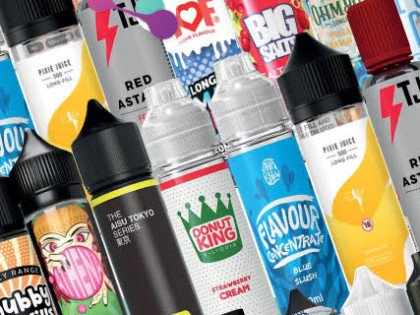“I want to sincerely thank the GFN team, particularly Gerry and Paddy, for asking me to give this oration, and for believing that I was worthy of the honour.
“This introduction is taken from a paper published in 2017 by two heroes of mine, Professor Ann McNeill and Dr Debbie Robson. The paper is called ‘A Man Before His Time’; Russell’s insights into nicotine, smoking, treatment and curbing the smoking problem. This is from their abstract:
“Michael Russell was among the first researchers to explain that smoking was a dependence disorder caused by the drug nicotine decades before this was recognised formally. He saw quickly the importance of delivering nicotine in a less harmful format as a way of controlling nicotine withdrawal when stopping smoking, first studying nicotine gum.
“In addition to pharmacotherapies, Russell’s research also explored the role of behavioural support, particularly the role of general practitioners (GPs), alone as well as supported by specialist clinics; this research underpinned initiatives in England to reimburse doctors for giving advice to smokers, and to provide a national network of smoking cessation services. Research on nicotine uptake from other delivery systems and routes led Russell to theorize that the speed and dose of delivery impacted upon the effectiveness of a product to act as a substitute for smoking.
“He commented on the addictiveness of the high nicotine doses delivered in quick succession when smoking cigarettes and argued that alternative recreational nicotine delivery systems would need to be promoted actively to smokers in order for them to compete with cigarettes, a forerunner for contemporary debates on electronic cigarettes.
“I used to have to miss the Michael Russell Oration, because my plane landed at about the time that it was starting. When I worked as a Stop Smoking Service Manager, I didn’t get enough time off to come earlier. But I’m retired now and I can do what I like, as long as it doesn’t harm anyone else.
“And this year, of course, none of us could travel to Warsaw (apart from the fantastic GFN team of people who live and work there). I know we are all sad not to be able to catch up with good colleagues and trusted friends who we haven’t seen all year. I will miss the hugs and shouts of delight as we greet each other at the Sphinx and try and work out what the system is for ordering beer. Not that I had to worry much, Paddy was usually there with a full glass for me just when I was trying to catch the barman’s eye.
“My retirement plans in 2018 crashed around me somewhat, as I was diagnosed with a brain tumour just after I announced my intention to finish. After what we thought for 10 days was flu, I was getting worse rather than better, and an MRI scan confirmed that these crushing headaches were not going to go away on their own.
“I had to undergo a tense wait for treatment, a long day of surgery to get it fixed, and an exhausting period of rehabilitation. Fired up by high-dose steroid treatment (you really do get very driven when you’re on Prednisolone) I had to urgently wrap up workstreams, delegate partnership-working to shocked colleagues and dump everything that I held dear in exchange for lying under a blanket on the sofa trying to follow the plot of repeat episodes of Friends.
“The treatment worked though – here I am – and the only thing you might notice is an occasional fumble for a word, along with a faint Zombie-scar on the back of my head.
“We really do need to get away from the cigarette and smoking expressions”
“One of the aspects of my work that I didn’t have to worry about was the drive to make the most of vaping as a way of helping people stop smoking. My fabulous team had developed from being nervous and unsure in 2014 when we first branded ourselves as ecig-friendly to being confident and knowledgeable in 2018. (Incidentally, the language that we use is important to note: we try wherever we can to not use the term ‘ecigs’, preferring ‘vape’. We really do need to get away from the cigarette and smoking expressions. They’re part of the huge perception problem, and the language of smoking simply perpetuates this.)
“I remember a heated conversation with the team, when I was challenged about the potential harms. ‘What if someone uses one of those things and has a heart attack?’ I pointed out that this happens with NRT too, and even quitting without any products, because smoking for 40 years will do that to you. Rather like my meningioma, it’s happening where it can’t be seen and one day, boom, it makes itself known. This was different though – there was no evidence, no research, no authority, just my powerful belief that this was the right thing to do.
“I hadn’t always thought like that. When our service users, and people at health fairs where I stood, telling people about our service, started showing me their cigalikes and saying they didn’t need to come to us because they’d got the problem licked on their own, I was dismayed, and imagined all the problems that even now are still being used to annihilate better alternatives to smoking. Making smoking normal again, attracting young people to use them, possible harms from using them around others – I wrote an article about my worries for the local paper. An article that I followed up only a month or so later with one saying I had changed my mind.
“Because my curiosity got the better of me, and a few weeks later I went to the first ecig summit in London, organised by the awesome Amanda Strange, a few weeks later. (That first year, everyone who wanted to could vape inside, and I was struck by how there was no lingering smell, or layer of smoke in the hall). I talked to consumers about their big fancy devices; Tom Pruen and Dave Dorn (strangers to me at the time but my teachers along the way since then) showed me how to stealth-vape. They told me about flavours, strengths, technique, and most importantly, how smoking had become a thing of the past for them.
“What dawned on me then as I mingled with others and got their perspectives was the passion with which they spoke. I’d never heard NRT users talk like this. In the Stop Smoking Services, our mantra is the celebrated quote from Michael Russell, that people smoke for the nicotine but die from the tar. It was plain to see that here was a way of unleashing the potential of an exciting new way to give smokers clean nicotine. We could get this technology into the hands of families who had to raid their kids’ money-boxes for the cash to buy food that day, the ones who despite getting breathless just climbing stairs couldn’t stop lighting up, the couples with a new baby who chain-smoke while they gaze lovingly at their new-born.
“Smokers live in perpetual hope that there will be a magic wand. For some, this was NRT or Champix, but for thousands more – well – they’d given up giving up”
“In the Stop Smoking Service, we have lots of tried and tested ways to help people stop smoking, and for those who engage and follow our advice we get pretty good results. Around half of all service users manage to quit by four weeks after their treatment starts, but the whole service model seemed to have faltered, and the time was right for something new. Smokers live in perpetual hope that there will be a magic wand. For some, this was NRT or Champix, but for thousands more – well – they’d given up giving up.
“And it must be remembered that the SSSs only reach a small proportion of people who smoke. Some may never go to get help to stop, just trying on their own, because they think that’s the best way to do it. They may think that asking for help is a sign of weakness, or not want to give control of their lives to someone else. (We don’t control anything of course, we just try and offer good coaching and a structure, along with motivation to succeed).
“A new way of stopping smoking though! We had something in the palms of our hands, and I knew this was the future. The difference was so marked. It wasn’t a medication. It didn’t have a prescribing protocol. Clinicians didn’t know what to say about it. It didn’t give hiccups, gastric irritation, skin rash, nausea, crazy dreams. People liked using it. They described it as a revelation. They told their smoking friends and went full-on evangelical about it.
“Unfortunately, it wasn’t only my decision to make. It’s often assumed that every Stop Smoking Service can act autonomously and choose the path that is right for their service users. If only. There are many layers of management, including political leaders in local government, who have all the power to support or deny what the practitioners might want to do. I was lucky; I had organised my arguments, I had a fantastically supportive and involved manager, Rod Moore, I gathered some evidence, including personal testimonies from those who had switched, and I got away with it. The lack of positive evidence was mirrored at the time by a lack of negative evidence – I know from talking to colleagues now that popcorn lung and heart attacks from vaping, although fake science, are genuine obstacles to embracing tobacco harm reduction.
“We needed to gain some practical information about how to use these devices. To give ourselves a helping hand, we invited Joe Lucas from Ecig Wizard to a team meeting – we just went into his shop around the corner from our office and invited him. I don’t know who was most nervous – him or us – but by the end of the hour the tension had melted away as he patiently instructed us on flavours, strengths, techniques, price; and he has been a source of freely-given advice ever since, including setting up a bespoke service for homeless people who couldn’t get their vape charged anywhere else.
“Other retailers have bent over backwards to help us too, including Brett Horton, who joined the mental health trust smokefree steering group and initiated supplies of vapes to patients, visitors and staff, Darren Healey from e-burn, Christian Mulcahy, and Fraser Cropper from Totally Wicked.
“I am indebted to these people (and others) for their generosity and their support. They provided free samples; we gave them to service users. We said ‘These are not licensed medication. We just happen to have some free samples, and you can have one if you like. You don’t have to, we have NRT as well.’ More often than not, people took them and did well with them. Eventually, the evidence in terms of our success rates and user satisfaction was enough for us to start buying them, rather than relying on donations.
“In 2015, I was flicking through Twitter a few weeks before the annual stop smoking conference run by the UKNSCC and spotted that there were threats to picket the event by people angry that vaping wasn’t even being seriously considered by traditional SSSs. I contacted the organiser, Andy McEwen, saying this was a big public perception problem. We rapidly agreed to invite them to the event, not for them to hear what we were doing but for them to tell us their experiences.
“I was hugely proud to share a platform with Sarah Jakes, Lorien Jollye and Dave Dorn, chaired by Gerry Stimson, where public heath, smoking cessation and consumer views came together for the first time as equals. It was the first of many shared platforms. Andy Morrison and I spoke together in Scotland, Robert Innes and I in north-west England, plus many more. Healthcare practitioners always said after the events that the human voice of the consumer was every bit as powerful as the technical, statistical or theoretical stuff.
“I literally thought we would have the whole smoking problem sorted in a couple of years”
“But as we know only too well, the opposition was gathering in the wings and they came out fighting. Every media story that whipped up panic about a new health fear over vaping would see service users coming into clinic the following day, slamming down the free vape they had been given and shouting at the advisor that they’d read that this would kill them, and that they were going back to smoking, because at least they knew where they were with that. Some would go onto NRT, which would just delay their relapse to smoking for a while.
“But there ‘was’ good news. When we did the metrics, we could see that more people quit with vaping than with NRT, and we knew there was no going back. Occasionally someone senior in our own department would get cold feet about it, affected in just the same way as the public when a scare-story broke, but by this time the evidence was growing and we had not just my optimism and tenacious belief but the support of respected organisations and leading experts. I am reluctant to start naming people personally, in case I miss out someone who deserves a round of applause, but PHE, ASH, the RCP, UKCTAS, CRUK, Clive Bates and the NCSCT are on my list of heroic influencers.
“In the time since I left the Leicester City Stop Smoking Service, many other services have taken the same approach to becoming vape-friendly, although sadly a small percentage are still refusing to embrace the opportunities, preferring to stick with the tried and tested (but limited in efficacy) treatments they have used for years.
“We need more smokers to try vaping. We need those who use both to switch completely. The real winners, for me, are the ones who would have just kept on smoking, if vaping hadn’t been an option.
“Pregnant women, who say they like vaping because the clouds are more like smoking than when they used an inhalator – if this is what’s important to them, and they stick with it, who are we to tell them they’re wrong?
“People with poor mental health, who find that after years of being told they should use patches, can enjoy a device that rapidly delivers enough nicotine to keep them happy, and who can enjoy the familiar feeling of something to draw on. Especially when they find that the medication they take for their mental health condition can be reduced once they stop smoking, because it’s the smoke, not the nicotine, that causes them to need higher doses.
“Homeless people, who no longer have to pick up fag-butts off the pavement, but who can ease their daily struggle with a vape”
“Teenagers (who can’t legally buy in the UK but were still smoking) who are already disadvantaged because they’re in the criminal justice system, or in foster care, or are using mental health services. Vaping may not be officially available to them but I would do anything to swap the cigarette in their hands for a vape, so that they don’t have to rock up at the cancer out-patient clinic in years to come. (A radiographer told me that when he reviews the X-rays that he’s just taken, and smiles at the patient, sending them off with the words ‘You’ll get an appointment for the results in a week or so’ his heart is heavy knowing, having seen for himself that the shadow on their lung is indisputably cancer.)
“Poor families, who were sinking almost all of their disposable income into tobacco, who tell their stop smoking advisor that they had never before known a time when they had money left over at the end of the month because vaping costs about 10% of what they spent on cigarettes.
“Older people with arthritic fingers who can’t manage 5 clicks but who can take to a pod system and who then inspire their younger family to give it a go.
“Risky smokers who can’t get out of the house (or even their bed) for whom switching may mean that they didn’t set themselves on fire when they fell asleep while smoking.
“What unites all these seemingly disparate groups is the pleasure they can take from vaping to get nicotine. It doesn’t have to be hard, or unpleasant. If we can stop quitting being something on the continuum between a chore and a form of torture and make it part of a different continuum between something that you get used to and a form of pleasure, we’d get more people stopping smoking. For that to happen, we need flavours to be permitted, tax to be kept low, and if health leaders are going to bang on about anything, they can bang on about the benefits, not the theoretical potential harms that they love dreaming up.
“And because I know that freeing the inner vaper in smokers is a worthwhile mission, I will talk to anyone who will listen. So yes, I have talked to government officials, national, regional and local organisations, charities, healthcare professionals, industry representatives of all sides – I’ll talk to anyone who’ll invite me because it’s quite simple: less smoking equals more birthdays.
“In my years in smoking cessation, I have never seen a product show the promise and the actual success that a vape brings to the person who has given up giving up”
“If people want to quit, I’ll support them with whatever method they choose, and I’ll help by guiding them towards what is most effective method. And that could be different from what worked for their neighbour or their partner. It’s not for me or any other person-who-thinks-they-know-best to dictate what they should use, so whether it’s patches, or prayer, or tablets, or cold turkey, or vaping, or independent sector products, or tobacco industry products, or snus, or non-tobacco nicotine pouches, or heat-not-burn – I’ll be happy just to see smoking rates fall. But in my years in smoking cessation, I have never seen a product show the promise and the actual success that a vape brings to the person who has given up giving up.
“Every smoker has a story to tell; every smoker who switches tells it with an excitement, a pride, a passion, a mission, that humbles me every time I hear their story. I want every policy-maker, scientist, law-maker to hear these stories, and to ask themselves whether their precautionary, prohibitionist, holier-than-thou speculation about what harms might emerge in decades to come, or whether they shouldn’t be using nicotine at all, is worth denying to smokers here and now the right to use nicotine without the smoke.”
Related:
Dave Cross
Journalist at POTVDave is a freelance writer; with articles on music, motorbikes, football, pop-science, vaping and tobacco harm reduction in Sounds, Melody Maker, UBG, AWoL, Bike, When Saturday Comes, Vape News Magazine, and syndicated across the Johnston Press group. He was published in an anthology of “Greatest Football Writing”, but still believes this was a mistake. Dave contributes sketches to comedy shows and used to co-host a radio sketch show. He’s worked with numerous start-ups to develop content for their websites.
Join the discussion
Harm Reduction For The Rich
The United Kingdom risks becoming a harm reduction country only for the wealthy, according to Michael Landl of the World Vapers’ Alliance
Longfills as an Alternative to Disposables
The disposable vape ban will impact many people, but there’s no reason to be concerned… Grab yourself a pod kit and a Longfill and you’ll be back to vaping the way you want to, just in a cheaper, more environmentally friendly and legal way.
COP10 is a Threat to Safer Nicotine Products
The EU obscures its position on low-risk alternatives to smoking before the WHO COP10 conference in Panama, starting Monday
Nicotine Is Not A Culprit
Planet of the Vapes has always encouraged smokers to use the quit product that works best for them, and snus is a product that seems to be unfairly blocked because it contains nicotine











